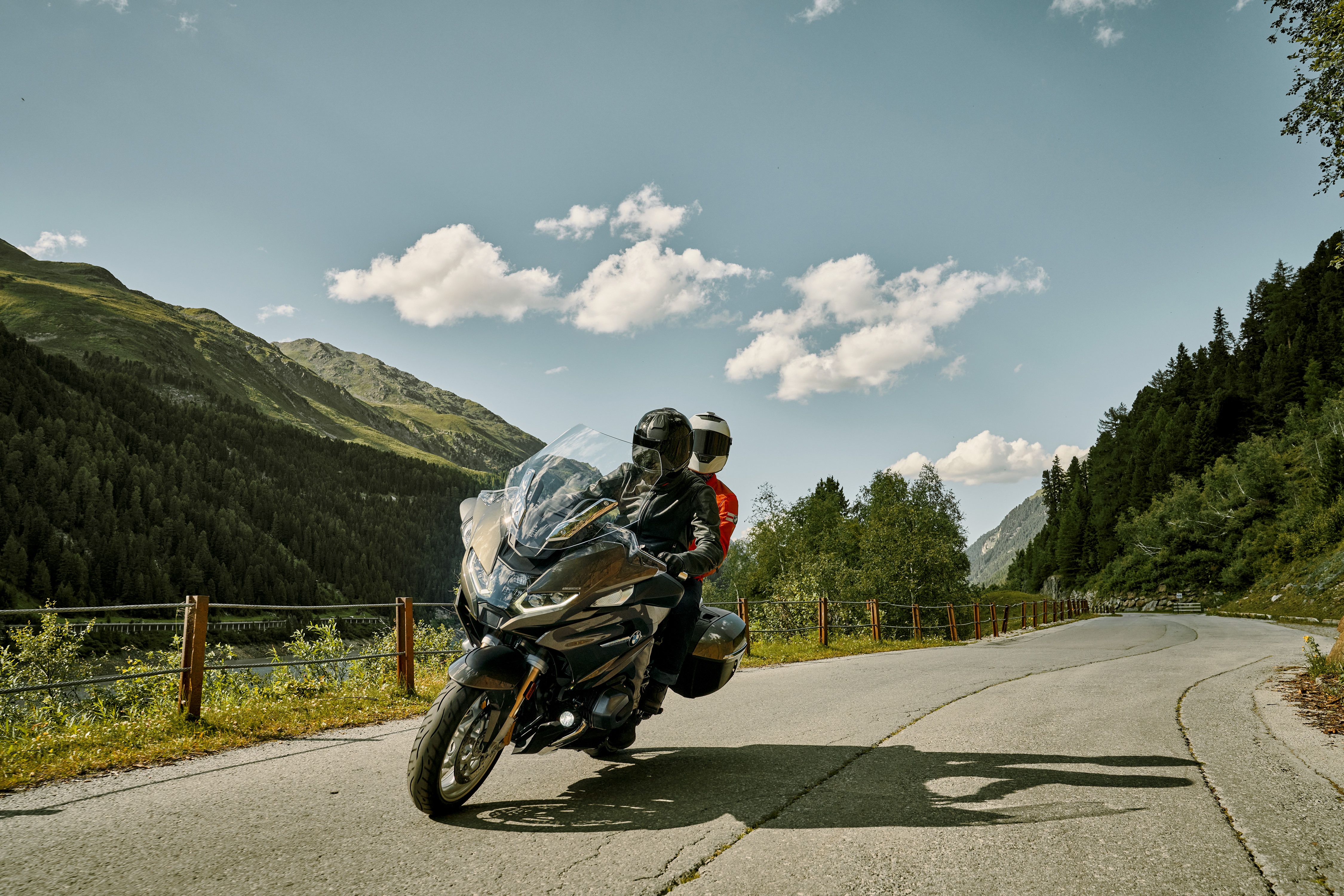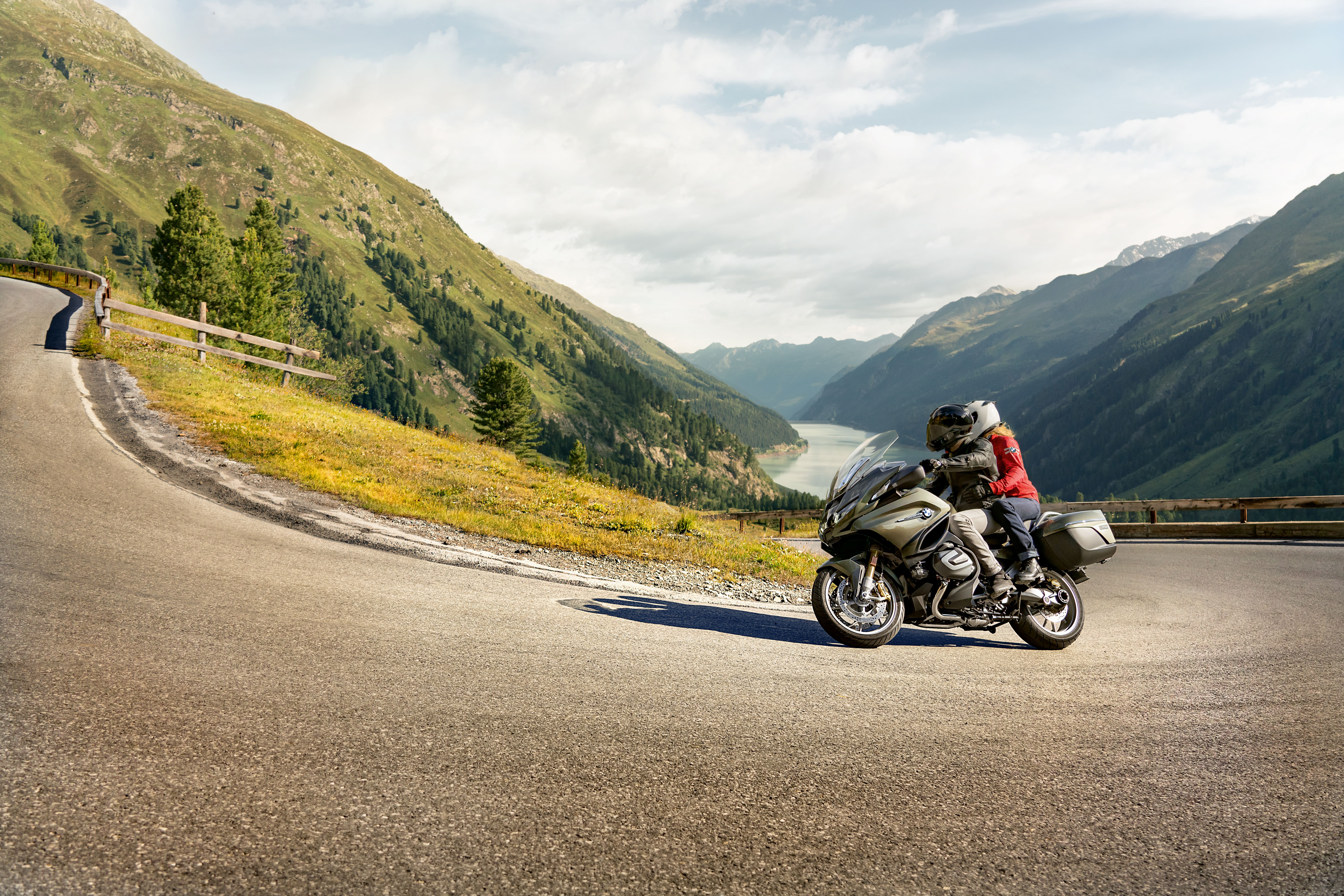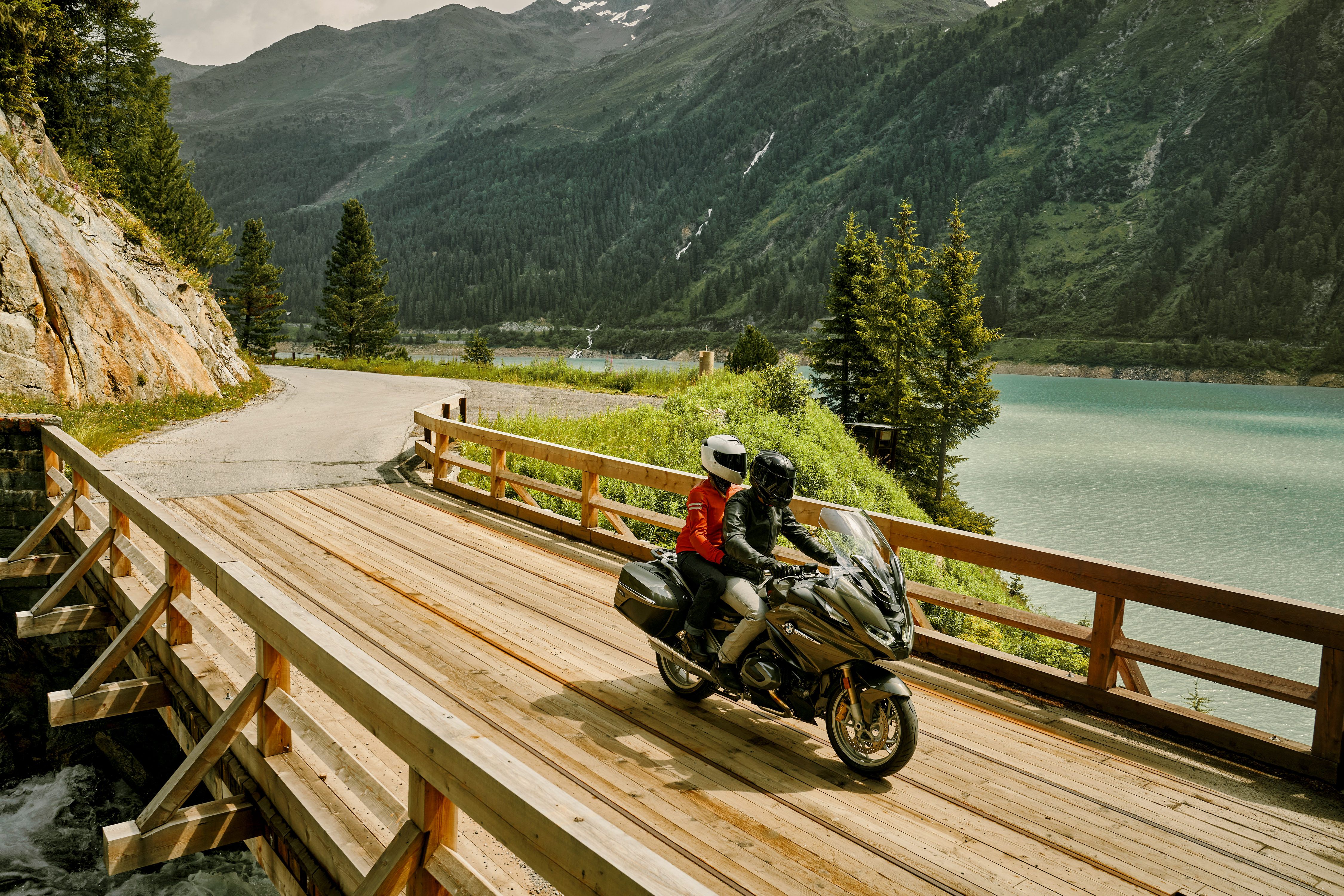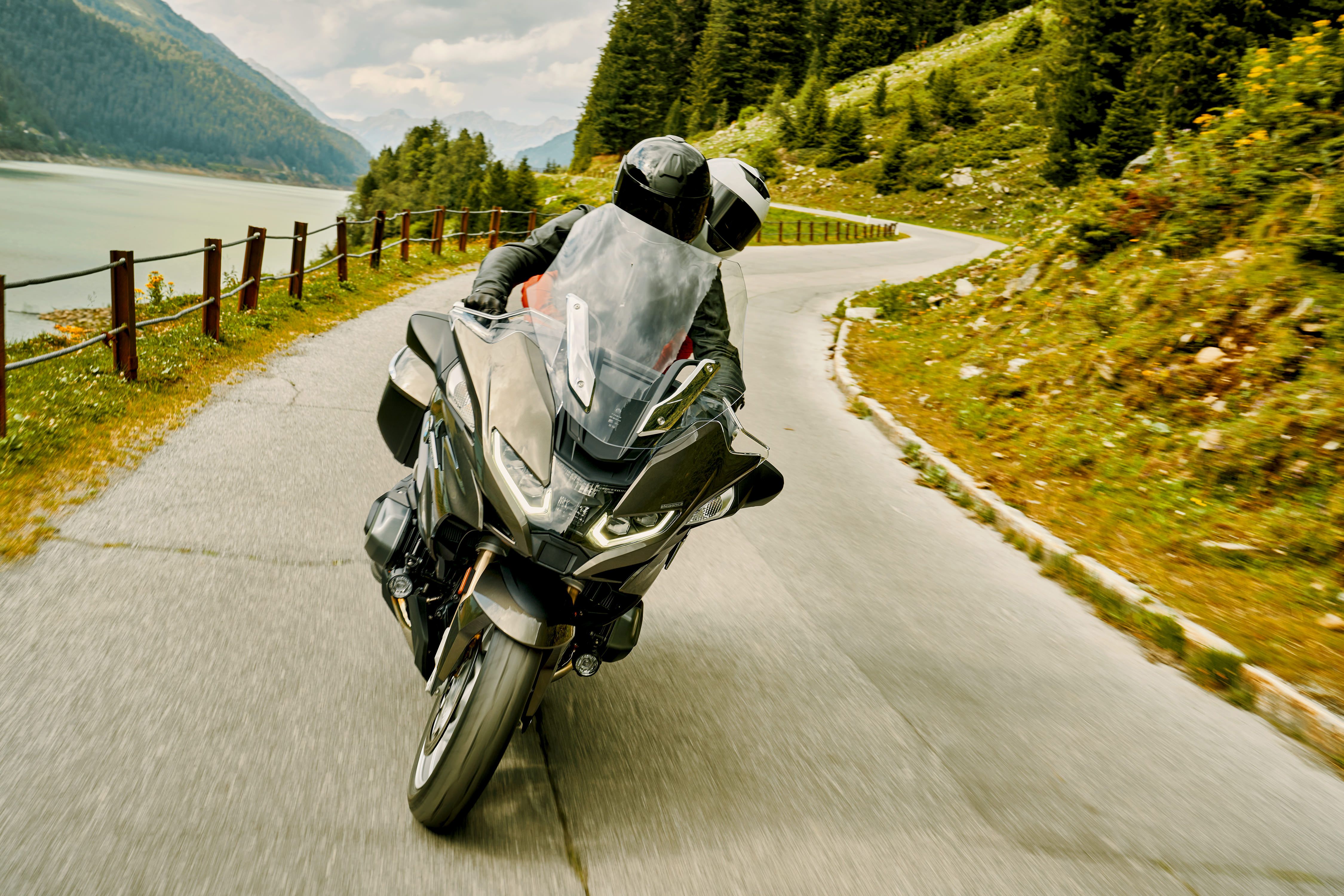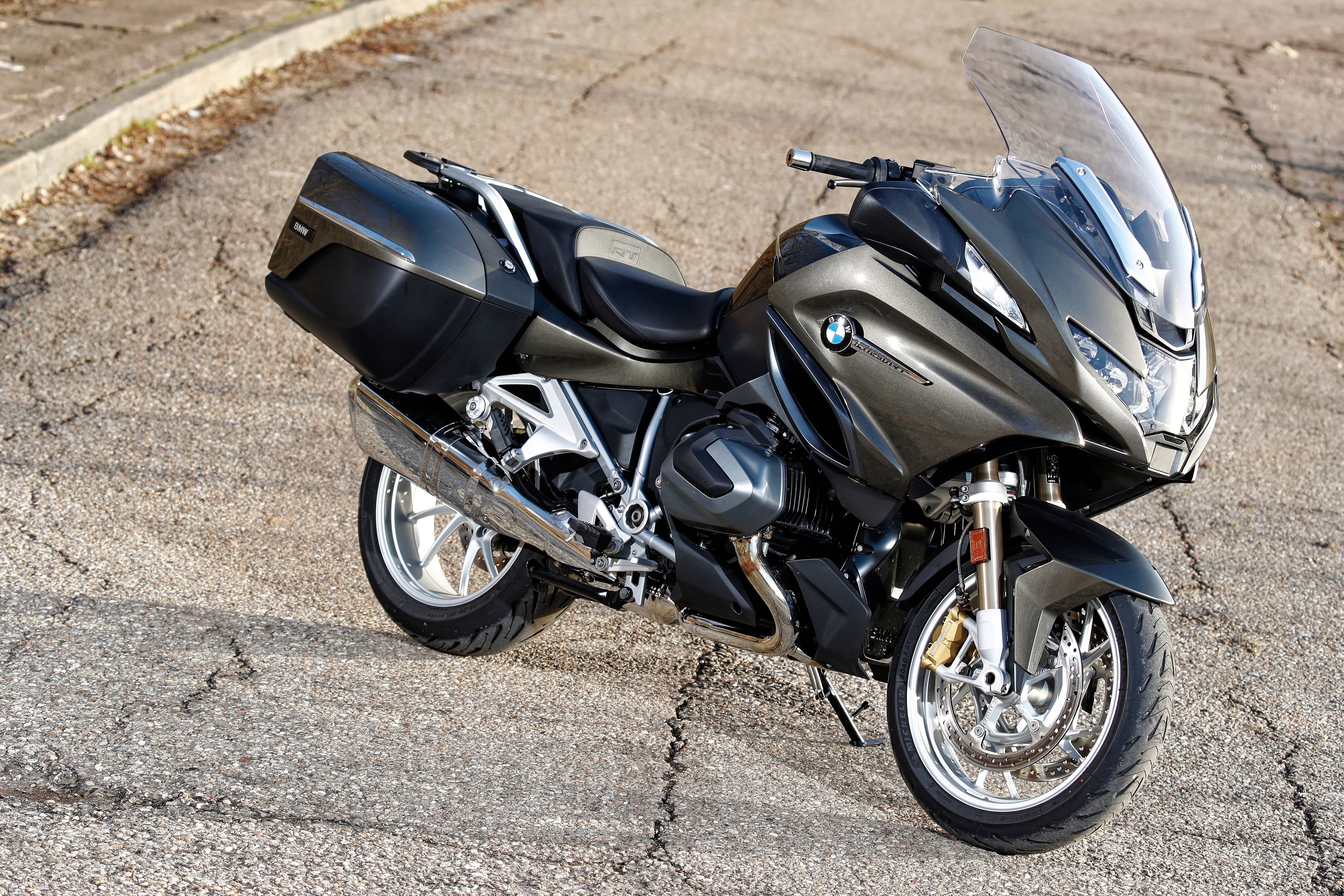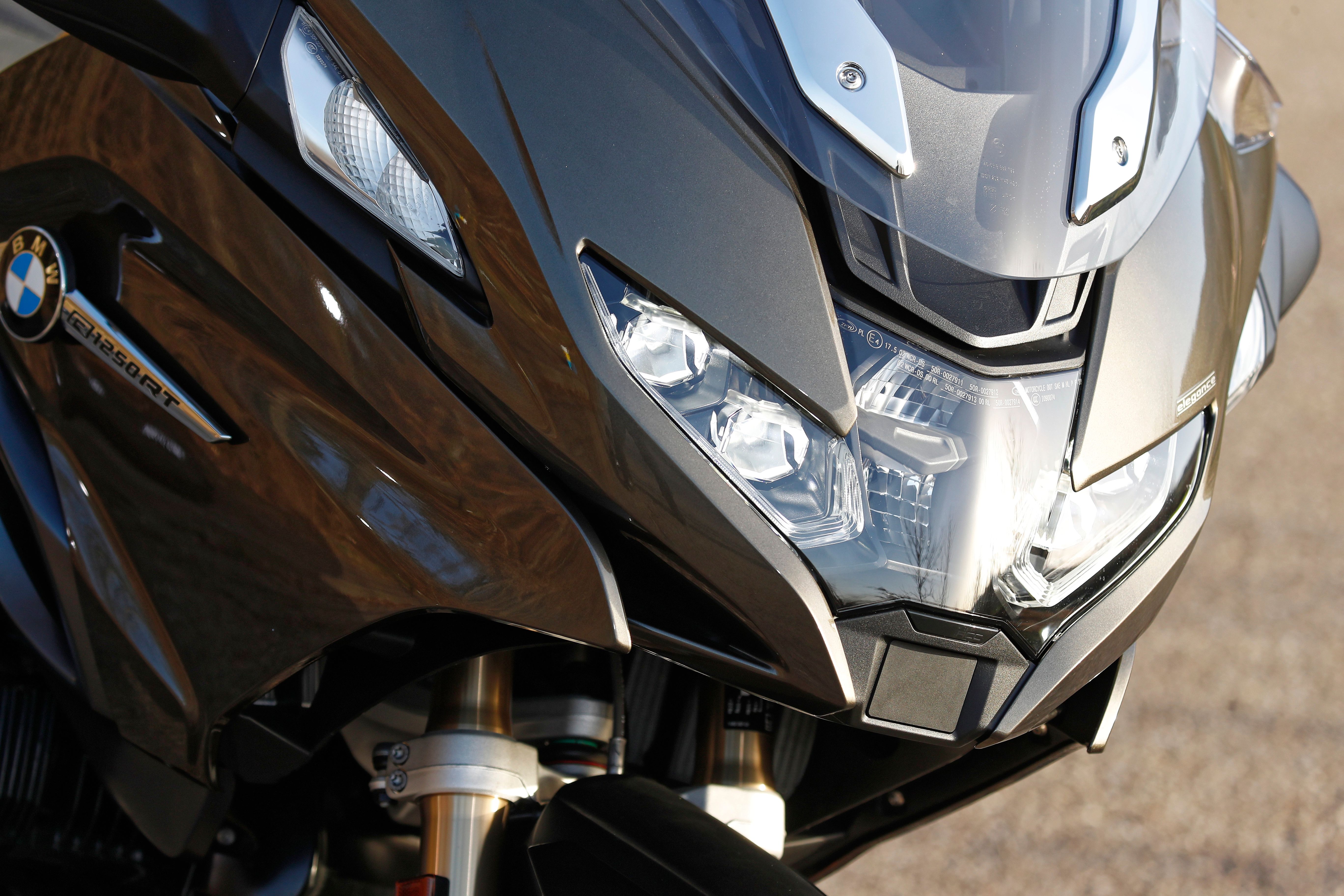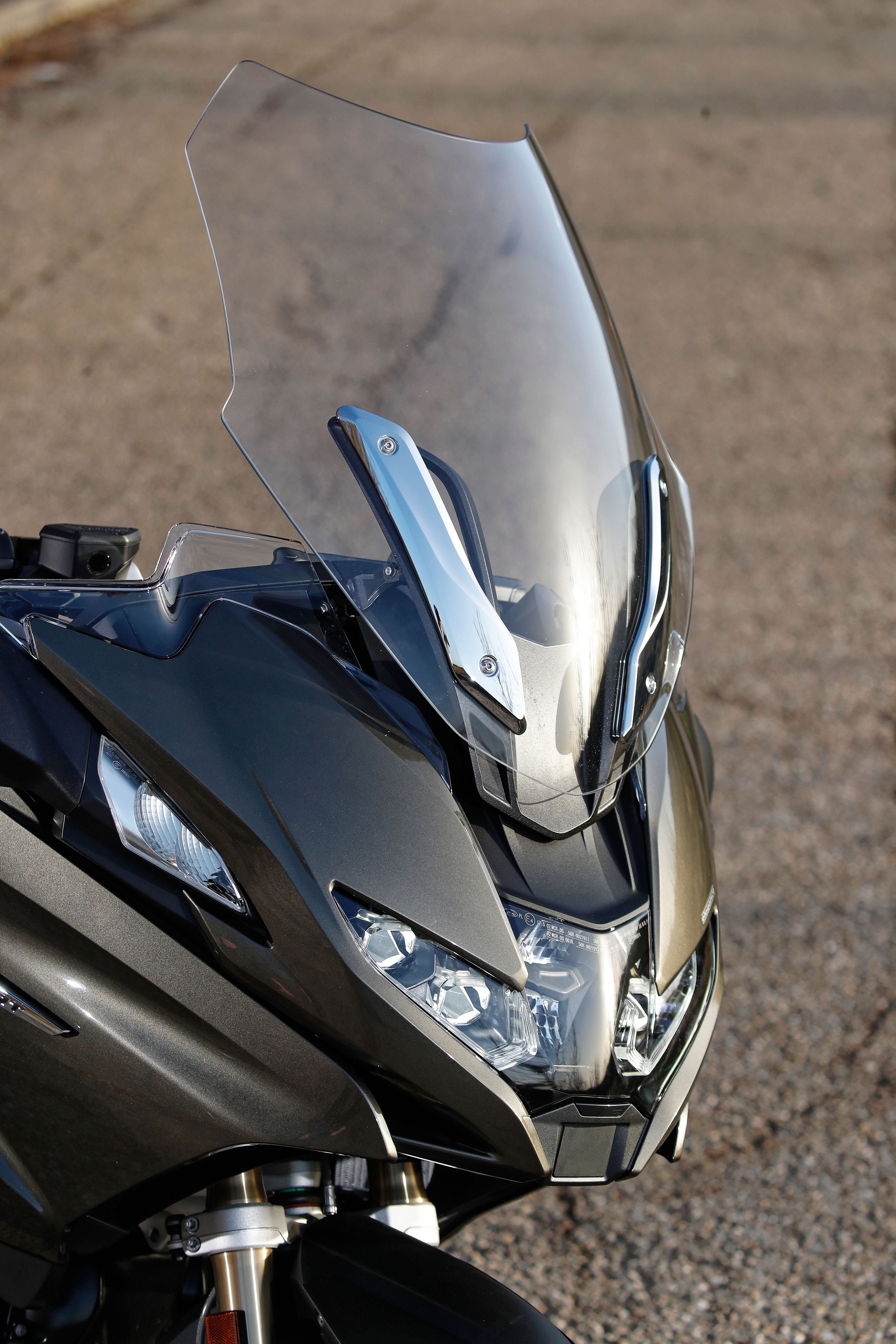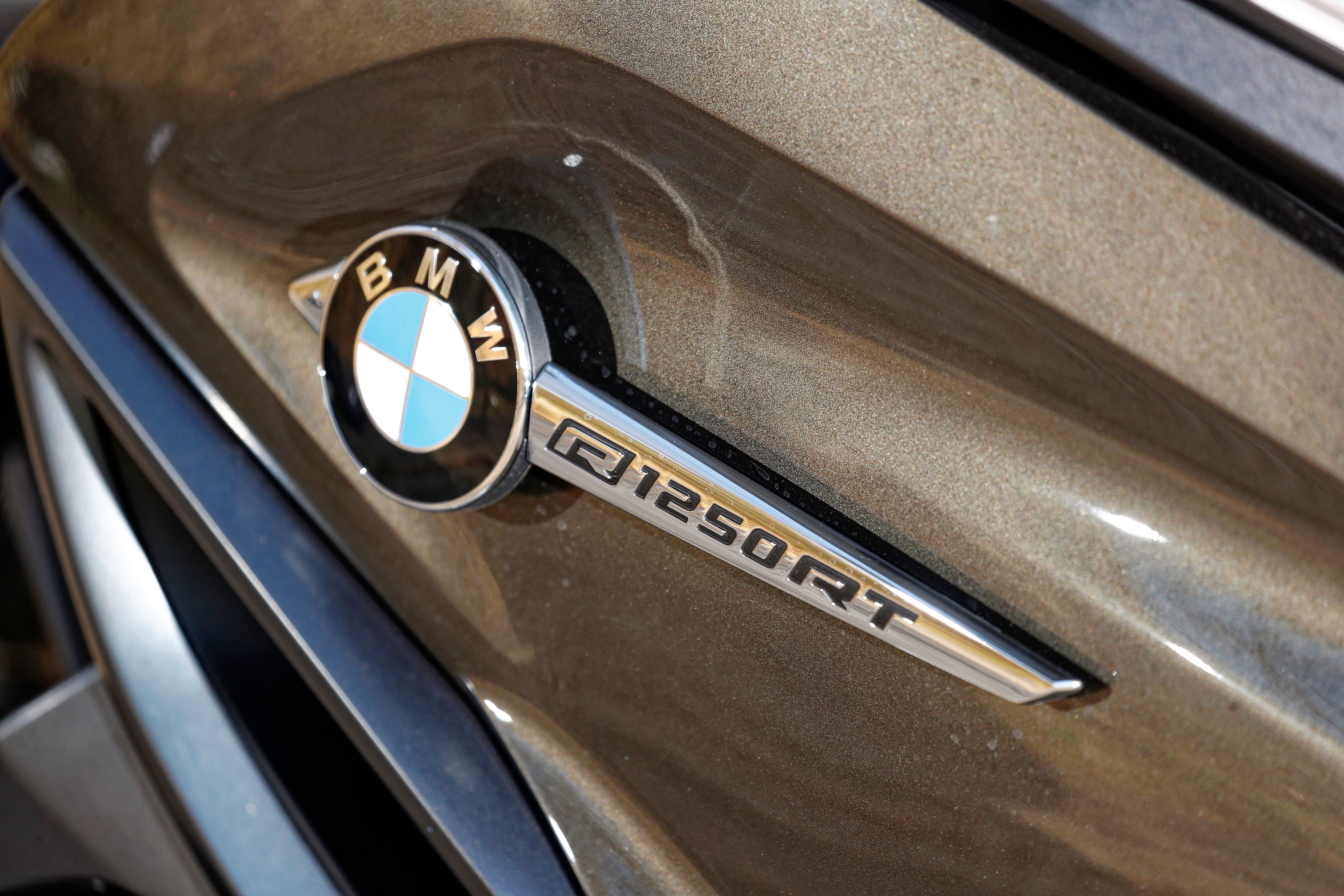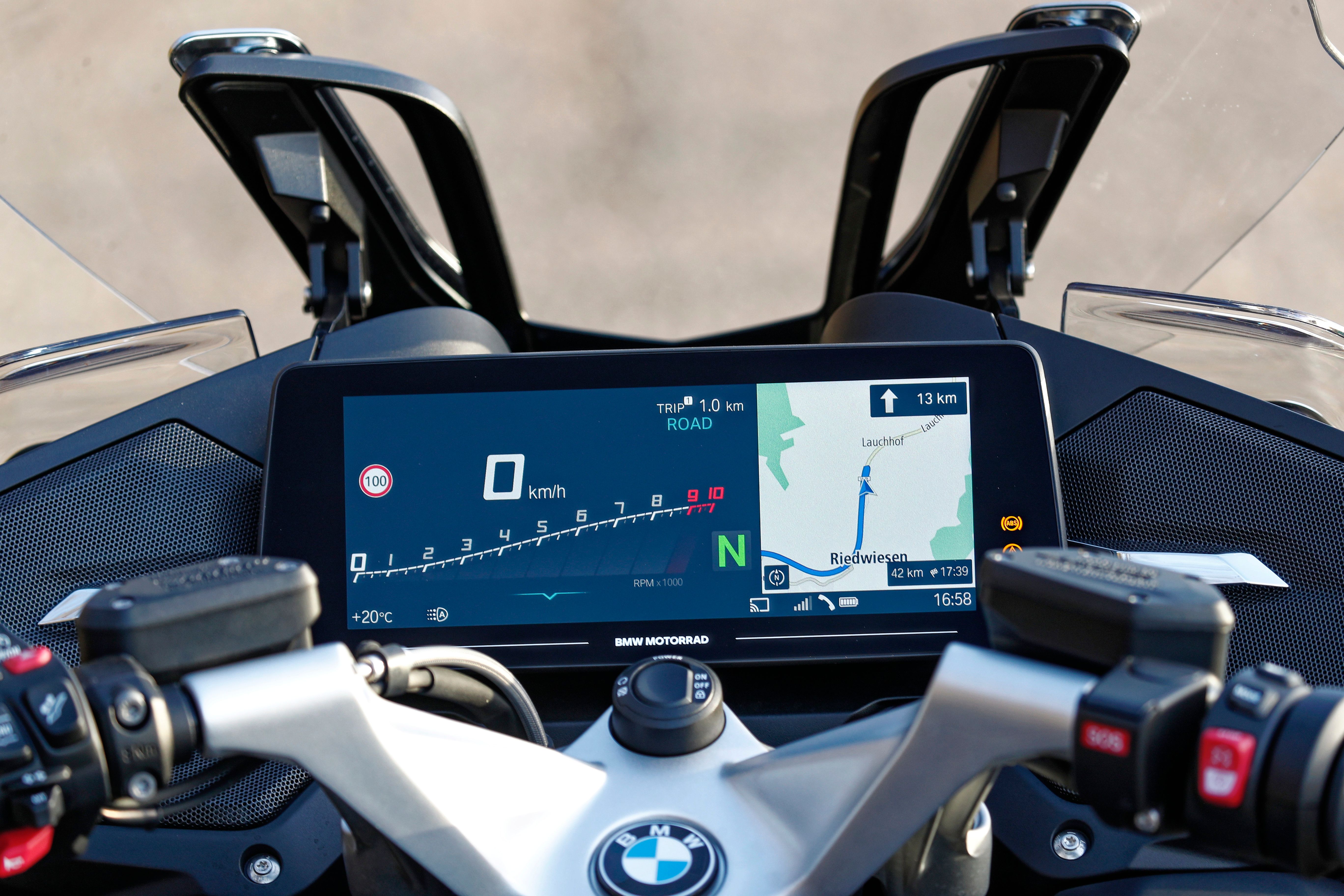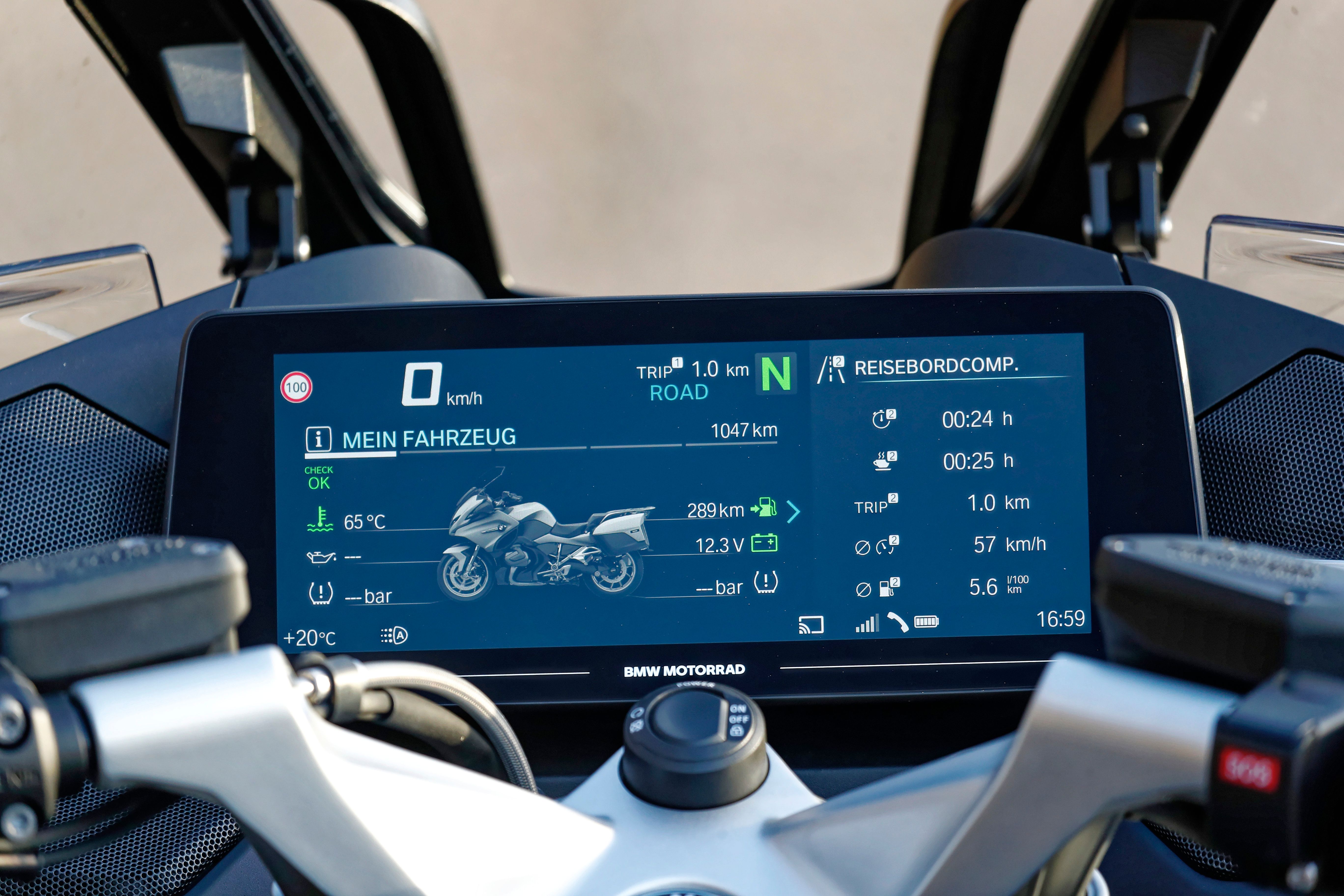BMW’s tradition of large, beautifully-built and brilliant touring bikes continues with the 2021 R1250RT. More power from the 1254cc engine, more comfort, more electronics and more ability add up to a motorcycle that is possibly the best touring bike on the market today.
2021 BMW R1250RT
- Make: Array
- Model: 2021 BMW R1250RT
- [do not use] Vehicle Model: Array
The Best BMW Just Got Better
BMW built its reputation on beautifully engineered motorcycles that were definitely not for the masses, if only because the cost was astronomical when compared to equivalent models from other manufacturers (not that there were any equivalent models!). But they sold well to the type of discerning customer BMW wanted to attract.
Things are no different today, save the fact that there are many more customers out there who can afford the quality a BMW offers. However, there is probably no more polarising brand to own; you either get BMWs or you don’t and those who don’t will never get them, for whatever sense of ingrained prejudice.
It’s the old adage; you won’t know until you try one. BMWs are no longer idiosyncratic motorcycles; the boxer twin engine has passed into motorcycling folklore and been around so long that for a BMW to not be powered by one is seen as unusual, if not suspicious at first. BMWs have rarely been exciting - until the appearance of the S1000RR, that is - but, rather, supremely efficient machines in the Teutonic manner.
The R1250RT Can Trace It's Lineage Back To The 1970s
That doesn’t mean that they aren’t fun to ride, though. Take the 2021 R1250RT, for example. Dauntingly large - from the front, at least - but possessed of a balance and grin-factor out of all proportion to its size. It is a touring bike par excellence with a lineage that goes back to the late 1970s and the R100RS and RT models; models that inspired a whole generation of touring bikes that married impressive comfort to performance and handling.
Of course, the latest RT is beautifully realised and executed - some might even call it beautiful (although I’ll stop short of that. Let’s call it aggressively handsome, shall we?) - but that can only take it so far. It might also be a given that it performs and handles brilliantly as well. But quite how well is not apparent until you ride it.
The Heart of the Matter; The New 1254cc Engine
The engine is now the 1254cc, variable-valve actuating Shiftcam-equipped, 136bhp and 105lb.ft. version of the boxer twin as found in the GS models. Anyone familiar with the BMW engine will know that it was getting a little breathless in old air-cooled form, although an upgrade to air/oil cooling helped boost the power output. The slight increase in capacity coupled with the variable inlet valve timing has taken it a step further, although it remains to be seen what can be done in future to help the engine keep pace with the ever spiralling outputs of rival manufacturers’ engines. A balance shaft gives uncanny levels of smoothness; anyone who last rode a BMW 20 years ago will not believe that the latest engine retains the same cylinder layout.
Bulky in appearance it might be, but the RT has impressive balance, thanks to a low centre of gravity, helped in no small part by the low seat height. U-turns are achieved with ease and it feels rock solid and stable on the move, even at low speeds. You get the feeling that things won’t be upset with the addition of a pillion and full panniers.
Rider's Eye View
As is customary, the ‘cockpit’ is an impressive place to pilot the RT from. The full-colour TFT dashboard is more akin to that of a car’s, being 10.25in. wide! Switchgear is chunky and logical and gives access via the screen to the mind-boggling amount of adjustment available, from suspension settings to riding mode, from seat and hand grip temperature to what information you want displayed on the screen. There is also a navigation option.
Stuffed Full of Electronics
If its electronics you are looking for then the RT has it all, including the - to my mind controversial - radar-controlled adaptive cruise control, which I won’t go into here as I covered it in another article .
Of more importance is the ABS Pro braking system. This enables the rider to activate both front and rear brakes using either the hand or foot brake lever. The six-axis EMU then calculates the lean angle of the bike, if any, to send the optimum braking force to the relevant wheel, taking into account weight transfer. Experienced riders might scoff at this but the real bonus of such technology is to make anyone and everyone feel at ease on such a large bike. Even experienced riders get it wrong sometimes and know that the application of the brakes can lead to disaster. The BMW system stops short of braking for you but does at least modify the braking pressure to make the bike do what it needs to do to avoid disaster.
The four riding modes alter throttle response, with Rain being the softest response and Dynamic being the most direct link between hand and engine. That the RT is able to use all 136bhp the engine pushes out is testament to the constant development work BMW engineers have put in to the chassis of this remarkable bike. It can be hustled through corners both slow and tight and fast and sweeping with complete confidence. It really is quite uncanny. Whilst the bulk of the bike might make you think it will be a handful in the corners, in reality it is approaching sports-touring bike levels of fun.
This is helped by the semi-active Dynamic ESA (Electronic Suspension Activation). This constantly monitors suspension movement as well as more stable parameters such as load to give the correct damping for any situation.
But, Is It Comfortable?
Rider comfort is well provided for. The electrically adjustable screen is enormous and can be raised to such a level as to completely isolate the rider from head wind, even at maximum speeds nudging 150mph. Personally, I don’t like looking through a plastic screen on a bike but it’s reassuring to know it’s there if the weather turns really bad and neither does it compromise stability.
The seat is wide and comfortable and the reach to the ‘bars feels natural. One criticism I had concerns the seat-to-footpeg dimension. With the seat height being low, taller riders like myself might find the footpegs relatively high, leading to a slightly cramped leg position that induced discomfort relatively quickly, something that never occurred on the taller GS models sampled at the same time. Of course, the low seat height plays into the hands of shorter riders but also those who find the task of manoeuvring such a large bike intimidating.
For taller riders, they might feel that a longer stretch forward to the footpegs would be preferable but that, of course, is impossible given those pesky cylinders sticking out either side. It’s not a deal-breaker but I personally found myself squirming in the seat after an hour or so; something that didn’t happen on a recent 8-hour trip on the R1250GS. On the other hand, I have spoken to people who have completed 12-hour riding days with no problem so it is completely subjective.
Whilst the traditional BMW touring bike might have been replaced as the flagship of the range by the GS, it doesn’t mean that BMW has left development of the RT alone. The R1250RT is a devastatingly effective and, most importantly, fun motorcycle to ride, whether on a Sunday morning blast or a serious 2000 mile cross-country trip.
Specifications:
Engine; Four stroke, horizontally-opposed twin-cylinder, 1254cc
Compression ratio; 12.5:1
Cooling system; liquid/air
Max Power; 136bhp
Max Torque; 105.4 lb.ft. @6250rpm
Front Brakes; 2 x 320mm floating discs, 4-piston radial calipers
Rear Brake; single 276mm disc, 2-piston floating caliper
Front tyre; 120/70 ZR17
Rear tyre; 180/55 ZR17
Wheelbase; 1485mm
Seat Height; 805 - 825mm
Wet weight; 615lbs
Fuel capacityl; 6.6 US gallons

